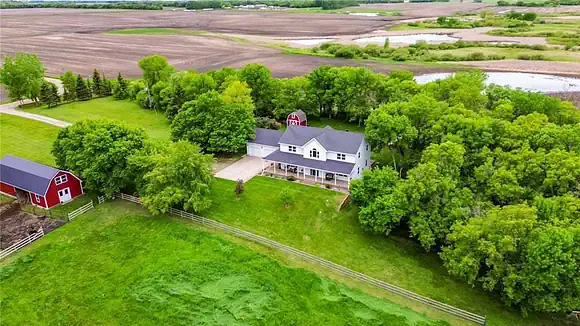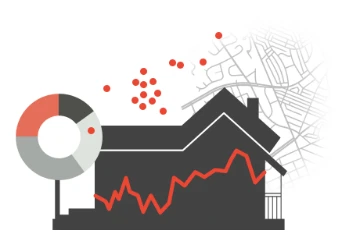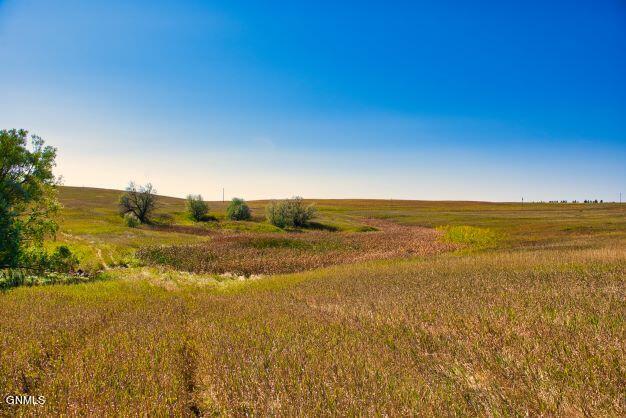Unpacking the Dollars: What Does the Average Home Cost in South Dakota in 2025?
South Dakota, with its stunning landscapes, burgeoning job market, and friendly communities, is increasingly catching the eye of prospective homebuyers. Whether you’re dreaming of the Black Hills, the vibrant city life of Sioux Falls, or the tranquility of its prairie towns, a crucial question is likely on your mind: What does the average home cost in South Dakota? Understanding this figure is the first step towards making your Mount Rushmore State dream a reality.
As of early 2025, navigating the South Dakota housing market requires a clear picture of current valuations. While “average” can be a tricky term, we’ll delve into what recent data suggests and the various factors that can cause home prices to swing. Knowing what the average home cost in South Dakota truly entails will empower you to make informed decisions, whether you’re a first-time buyer, relocating, or seeking an investment.

Decoding “Average”: Median vs. Mean in South Dakota’s Housing Market
When discussing the average home cost, it’s important to distinguish between “median” and “mean.” The mean is the traditional average (sum of all home prices divided by the number of homes), which can be skewed by a few very high or very low-priced properties. The median home price, however, is the middle value – half the homes sold for more, and half sold for less. Most real estate experts prefer the median as it often provides a more accurate representation of the typical home price.
In early 2025, data from various real estate market sources indicates that the median home sale price in South Dakota hovers in the range of $315,000 to $330,000. For instance, sources like Zillow and Bankrate reported figures around $316,000 to $317,000 for late 2024 and early 2025, with modest year-over-year increases. It’s worth noting that median listing prices (the prices homes are advertised at) can sometimes be higher, with resources like FRED (Federal Reserve Economic Data) showing median listing prices potentially approaching the $380,000-$390,000 mark in certain periods. This difference often accounts for negotiation and market dynamics.
This figure provides a solid baseline, but remember, it’s a statewide snapshot. The actual average home cost in South Dakota you might encounter can vary significantly based on a multitude of factors.
Key Factors Influencing Home Costs in South Dakota
Several dynamic elements contribute to the housing price landscape across South Dakota. Understanding these can help you pinpoint areas and property types that align with your budget.
1. Location, Location, Location: Urban Centers vs. Rural Retreats
This age-old adage couldn’t be truer in South Dakota.
- Urban Hubs: Cities like Sioux Falls and Rapid City, with their greater job opportunities, amenities, and services, generally command higher home prices. Sioux Falls, as the state’s largest city, often sees median prices exceeding the state average due to high demand. For example, median listing prices in Sioux Falls could be in the $370,000s or higher depending on the specific neighborhood and market conditions.
- Rural Areas & Smaller Towns: Conversely, many of South Dakota’s charming smaller towns and rural expanses offer more affordable housing options. If you’re seeking more land or a quieter lifestyle, you might find that your budget stretches further outside the main metropolitan areas. This is where a deeper look into what does the average home cost in South Dakota by region becomes vital.
2. Property Type, Size, and Acreage
The kind of home you’re looking for significantly impacts the price:
- Single-Family Homes: These remain the most common type of purchase and form the bulk of “average cost” calculations.
- New Construction vs. Existing Homes: New builds often come with a premium due to modern amenities and lower initial maintenance, but existing homes can offer character and established neighborhoods.
- Size and Features: The number of bedrooms and bathrooms, square footage, garage size, and interior finishes all play a substantial role.
- Land: In a state known for its open spaces, the amount of land accompanying a property can be a major price driver, especially for ranches, farms, or homes with significant acreage.
3. Economic Conditions and Job Market
South Dakota has enjoyed a relatively stable and growing economy, which buoys the housing market.
- Low Unemployment: A strong job market means more people have the financial capacity to buy homes, increasing demand.
- Industry Growth: Key sectors like agriculture, healthcare, finance, and tourism contribute to economic health and, consequently, housing demand in specific regions.
4. Supply and Demand Dynamics
Like any market, housing is subject to supply and demand.
- Inventory Levels: In recent years, many markets have experienced tight inventory, meaning fewer homes for sale. When demand outstrips supply, prices tend to rise. As of early 2025, some reports suggest an easing of inventory in South Dakota, which could offer buyers more options and potentially stabilize prices.
Days on Market (DOM): This metric indicates how long homes are staying on the market before being sold. A lower DOM often signifies a seller’s market with competitive bidding, while a higher DOM might give buyers more negotiating power. Recent data shows homes in South Dakota going to pending in around 20-30 days on average.
5. Interest Rates
Broader economic factors, particularly mortgage interest rates set by national trends, have a profound impact on affordability. Higher rates increase the monthly cost of a mortgage, which can dampen demand and potentially cool price growth. Conversely, lower rates can make borrowing cheaper, often stimulating buyer activity.

Regional Variations: A Closer Look at South Dakota’s Markets
To truly grasp what does the average home cost in South Dakota, let’s consider some regional nuances:
- Sioux Falls Metro (Minnehaha & Lincoln Counties): As the economic engine of the state, this area generally sees the highest demand and, consequently, higher median home prices compared to the rest of South Dakota. The appeal of city amenities, diverse job prospects, and good schools keeps this market robust.
- Rapid City & the Black Hills (Pennington County): This region attracts buyers with its natural beauty, tourism industry, and Ellsworth Air Force Base. Prices here can vary widely, from more urban settings in Rapid City to secluded cabins and luxury homes in the Hills. The unique appeal often supports strong property values.
- Aberdeen, Watertown, Brookings (Eastern SD): These cities, home to universities and significant local employers, have their own active housing markets. Prices are generally more moderate than in Sioux Falls but reflect stable local economies.
- Pierre (Central SD): As the state capital, Pierre has a steady demand driven by government employment. Its more remote location can mean different price dynamics than the larger eastern cities.
Rural Counties: In many of the state’s agricultural and less populated counties, home prices are often significantly lower. These areas can offer excellent value for those seeking space and a rural lifestyle, though services and job markets may be more
What Kind of Home Can You Expect for the Average Price?
Given a statewide median sale price in the low $300,000s, what might that translate to? In many parts of South Dakota, especially outside the priciest neighborhoods of Sioux Falls or Rapid City, this budget could secure a comfortable single-family home. This might typically be a 3-bedroom, 2-bathroom house with a garage and a decent yard. In more rural areas, the same budget might afford a property with more land or a larger home that might need some updating.
However, in high-demand areas or for newer, more amenitized properties, the “average” price point might mean a smaller starter home, a townhome, or a condo. It underscores the importance of researching specific locales within the state.
Beyond the Sticker Price: Other Costs to Consider
The purchase price is just one component. When budgeting for a home in South Dakota, also factor in:
- Property Taxes: South Dakota is known for not having a state income tax, but property taxes are a significant local funding source. Rates vary by county and municipality.
- Homeowners Insurance: Essential for protecting your investment.
- Closing Costs: Typically 2-5% of the home’s purchase price, covering fees for appraisals, inspections, title insurance, etc.
- Moving Expenses: Don’t forget the cost of actually relocating.
- Ongoing Maintenance & Utilities: Budget for upkeep, repairs, and monthly utility bills.

Is Buying a Home in South Dakota a Good Investment?
Historically, real estate has been a solid long-term investment. South Dakota’s market has shown steady appreciation, though, like all markets, it’s subject to cycles. The state’s appeal – its business-friendly environment, quality of life, and outdoor recreation – continues to draw new residents, supporting housing demand.
For reliable, up-to-date statistics on housing inventory and listing prices, a valuable non-competitor resource is the Federal Reserve Economic Data (FRED) provided by the St. Louis Fed. Their series on Median Listing Price in South Dakota (MEDLISPRISD) offers a good overview of market trends.
Conclusion: Navigating Your South Dakota Home Purchase
So, what does the average home cost in South Dakota? While we can point to a median sale price generally in the $315,000 to $330,000 range for early 2025, the most accurate answer depends heavily on where you want to live, what type of property you’re seeking, and the dynamic market conditions at the time of your search.
Prospective buyers should:
- Research Specific Areas: Dive deep into the communities that interest you.
- Get Pre-Approved for a Mortgage: Understand your true buying power.
- Work with Local Real Estate Professionals: Their expertise is invaluable in navigating local market nuances and finding properties that meet your needs and budget.
South Dakota offers a diverse range of housing opportunities. By understanding the factors at play and the current market landscape, you’ll be well-equipped to find your perfect piece of the Prairie State.




